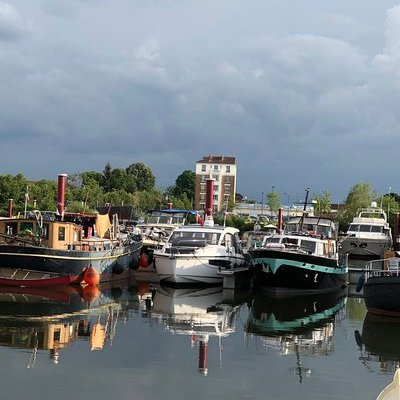
Like us on Facebook
PLACE NAMES


 
|
|
Draveil
|

|
|
Draveil is a commune in the department of Essonne in the southern suburbs of Paris, France. It is located 19.1 km (11.9 mi) from the center of Paris. It was formally twinned with Hove, East Sussex in The United Kingdom.
With a score of 7.16/10, Draveil ranks 49th among the 100 best French towns with a population of over 20,000 inhabitants. This result is a survey conducted permanently among the French population and takes into account the following factors : environment, security, medical facilities, cultural events, sports, shops and transport.
Draveil is situated between the right bank of the Seine and the Forest of Sénart which gives the whole town a very green environment. In fact, the official motto of the town in Latin is "Inter undas et arbores", which can be translated into English as "between water and trees", a reference to its location between the Seine and the Forest of Sénart. Hardly a third of Draveil's area has been developed, thus offering a preserved environment to its inhabitants. Draveil also hosts a large green park called the "Base de loisirs du Port-aux-Cerises" that covers over 175 hectares including trees, lakes and activity areas including a horse-riding club, an amusement park for children, an open-air swimming-pool, football field, tennis courts, acrobranche rope park, a small marina with berthing space for about thirty boats, etc.
Draveil consists of the main town Draveil, the former villages Champrosay and Mainville, and several newer housing developments. Champrosay was home to several artists in the 19th and early 20th century, including painters Marie Laurencin and Eugène Delacroix and writer Alphonse Daudet.
Human presence in Draveil during the Neolithic period is suggested by the discovery of a menhir called the "Pierre à Mousseaux" dating from the fourth millennium BC and confirmed by the presence of tools and weapons in flint cut found in the Mainville quarter of Draveil. The Gauls named the place Dracvern meaning "the spirit of the Alder". The Romans called it Dravernum. In the Merovingian period a money minting facility was installed here, which minted one-third of a gold sol called "Draverno".
 Feel free to Email me any additions or corrections Feel free to Email me any additions or corrections
LINKS AVAILABLE TO YOUR SITE
| | |





